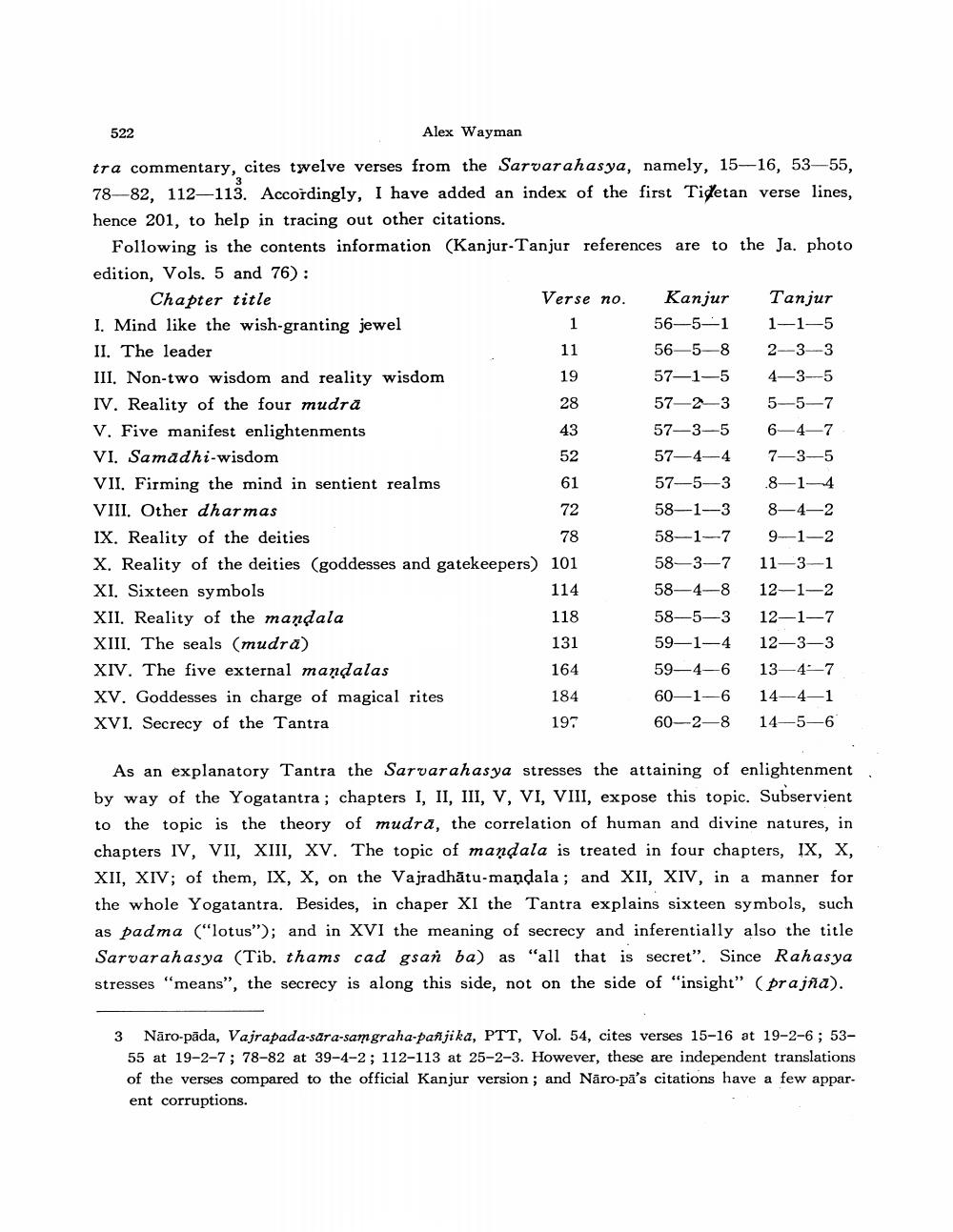________________
522
Alex Wayman tra commentary, cites twelve verses from the Sarvarahasya, namely, 15-16, 53-55, 78-82, 112–113. Accordingly, I have added an index of the first Tidetan verse lines, hence 201, to help in tracing out other citations.
Following is the contents information (Kanjur-Tanjur references are to the Ja. photo edition, Vols. 5 and 76): Chapter title
Verse no. Kanjur Tanjur I. Mind like the wish-granting jewel
56—5—-1 1-1-5 II. The leader
56-5-8 24-3-3 III. Non-two wisdom and reality wisdom
57–1–5 4—3—5 IV. Reality of the four mudra
57–2-3 5—5—7 V. Five manifest enlightenments
57–3-5 6-4-7 VI. Samadhi-wisdom
57—4—4 7—3—5 VII. Firming the mind in sentient realms
57—5—3 8-1-4 VIII. Other dharmas
58–1–3 8-4-2 IX. Reality of the deities
58-1-7 9-1-2 X. Reality of the deities (goddesses and gatekeepers) 101 58—3—7 11-3-1 XI. Sixteen symbols
114 58—4-8 12–1-2 XII. Reality of the mandala
118
58—5—3 12–1–7 XIII. The seals (mudra)
131 59–1–4 12—3—3 XIV. The five external mandalas
164 59–4–6 13–4–7 XV. Goddesses in charge of magical rites
184 60-146 14–4–1 XVI. Secrecy of the Tantra
197
60-2-8 14-5-6
As an explanatory Tantra the Sarvarahasya stresses the attaining of enlightenment. by way of the Yogatantra; chapters I, II, III, V, VI, VIII, expose this topic. Subservient to the topic is the theory of mudra, the correlation of human and divine natures, in chapters IV, VII, XIII, XV. The topic of mandala is treated in four chapters, IX, X, XII, XIV; of them, IX, X, on the Vajradhātu-mandala ; and XII, XIV, in a manner for the whole Yogatantra. Besides, in chaper XI the Tantra explains sixteen symbols, such as padma ("lotus"); and in XVI the meaning of secrecy and inferentially also the title Sarvarahasya (Tib. thams cad gsan ba) as "all that is secret". Since Rahasya stresses "means", the secrecy is along this side, not on the side of "insight" (prajña).
3 Nāro-pāda, Vajrapada-sara-samgraha-panjika, PTT, Vol. 54, cites verses 15-16 at 19-2-6; 5355 at 19-2-7; 78-82 at 39-4-2; 112-113 at 25-2-3. However, these are independent translations of the verses compared to the official Kanjur version; and Nāro-pa's citations have a few apparent corruptions.




